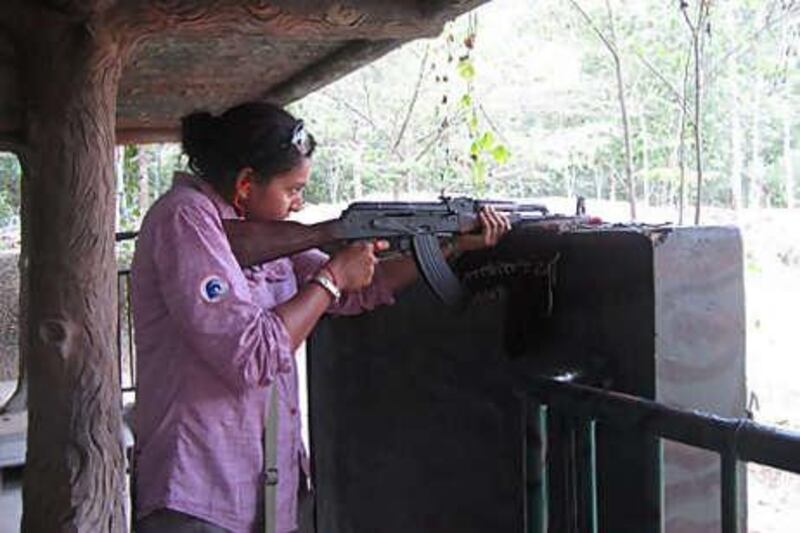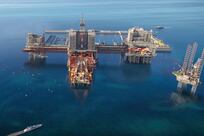'The UAE? Where is that?" At least I think that's what the officer at the Cambodia-Vietnam border said to his colleague. It took almost 30 minutes for us to convince the border police that the friend I was travelling with (a UAE national) was carrying a passport from a country that existed. It turns out that Dena was the first UAE national to cross at that border. A similar incident happened in the Himalayas last year when my travelling companion was the first UAE national to cross into an Indian-Himalayan territory. It's great being friends with such an avant-garde generation of Emiratis. The officer excitedly jotted the country's name down in his logbook and we were given permission to step over the border into Vietnam, backpacks in tow.
Arriving in Ho Chi Minh City (HCMC, formerly known as Saigon), I was greeted by an orchestra of motorbike engines. This would be the soundtrack to my fortnight in Vietnam. In a population of 10 million people, there are five million motorbikes on the streets. The street corners in Vietnam don't have Starbucks, they have brilliantly displayed helmet stalls, and locals wear their bright, tartan or star-covered helmets around the cities as a fashion statement.
View On the road in a larger map
I quickly learnt that the best way to cross giant junctions in this country is to quite literally walk into them with a sense of purpose and a look of determination. The local motorcyclists are experts in dodging pedestrians, as though it's a national sport. Do, however, hold on to your bags and watch out for the drive-by "HCMC cowboys", bikers who are notorious for robbing pedestrians. Like many cities in the Indochina region, HCMC is a great walking history lesson. The Cu Chi tunnels, although a half-day journey out of the city, are worth a visit. This genius tunnel network stretches to the Cambodia border and was designed to trick, hide from and defeat the enemy during the war (65,000 Vietnamese dong; Dh12 for admission). Complete with underground kitchens and barbarically lethal booby-traps, the tunnels were built simply using pickaxes and local materials.
If I were an American tourist in Vietnam, I certainly would not feel unwelcome, but I would feel slightly uncomfortable. A brief introduction before exploring the Cu Chi tunnels referred to American bombs as "devil-bombs" and destroyed tanks and bomb craters were introduced as "this was left by the enemy". Nowhere was this feeling more apparent than the HCMC War Remnants Museum, full of graphic pictures, chilling quotes from American soldiers and foreign leaders, as well as a few preserved foetuses illustrating the horrendous effects of the infamous Agent Orange used during the Vietnam War (entrance costs VD15,000; Dh3).
Perhaps it was the large amount of seafood and rice dishes I had been consuming, or the rocky nine-hour bus journey to HCMC, but my stomach began calling on me to feed it home-comfort food. Sozo is a great little cafe on the main backpacker street in HCMC. It supports and employs locals and proceeds from sales go to Vietnamese families in need. The wholewheat bread, muesli and yoghurt was a (welcome) novelty for me. I visited the cafe so often during my stay, it was only right to buy a Sozo T-shirt (Average price of meal $2-3 [Dh7-11], T-shirt $6 [Dh22]).
Budget accommodation in HCMC is plentiful. I stayed at the Huynh Anh Hotel and would advise anyone visiting HCMC to avoid it at all costs. The rooms are small, reception is unhelpful, the lift shuts off for a few hours each day and both ants and rats were a problem during my stay. I found out, albeit a few nights too late, that there are many cleaner, centrally located hostels and hotels for the same price ($20-25 [Dh73-92] per person per night).
The small seaside resort-style town of Nha Trang was welcome calm after the congestion and bustle of Ho Chi Minh City. Both foreigners and visitors from all over Vietnam flock to the area's famous hot springs. For VD100,000 (Dh19) you can spend the whole day hopping between mud baths, mineral baths, waterfalls and swimming pools and finish off a day of pampering with a massage or manicure near by. The government imposes power cuts in Nha Trang, which means that certain areas (including hotels) have electricity only every other day. The hot springs were the perfect place to spend the day while I waited for the electricity in the hotel to come back on.
Aside from motorbikes, my main method of transport, as I worked my way from the Cambodian border to the north of Vietnam, was overnight trains. I was pleasantly surprised by the Reunification Express, an eight-hour train between HCMC and Nha Trang. My four-berth sleeper cabin had fresh sheets, air conditioning, free tea, power sockets, reading lights and a door marked "Western Toilet" near by. Aside from the train coming to halt quite suddenly a few times, I managed to sleep for most of the journey.
I'm aboard a 14-hour overnight train from Nha Trang to Hoi An as I write this. The air conditioning has turned off, the lights are constantly flickering and the bedsheets still have bits of food left by previous passengers. There is also a strong stench of durian engulfing the entire cabin. The smell of this fruit is so pungent and lingering, many hotels in Cambodia and Vietnam actually put a ban on guests bringing them into rooms. As one local described it "it tastes like heaven, but smells like hell". This will be an interesting night's sleep.
Next week: Ismat heads north to Hue, Halong Bay and Hanoi





